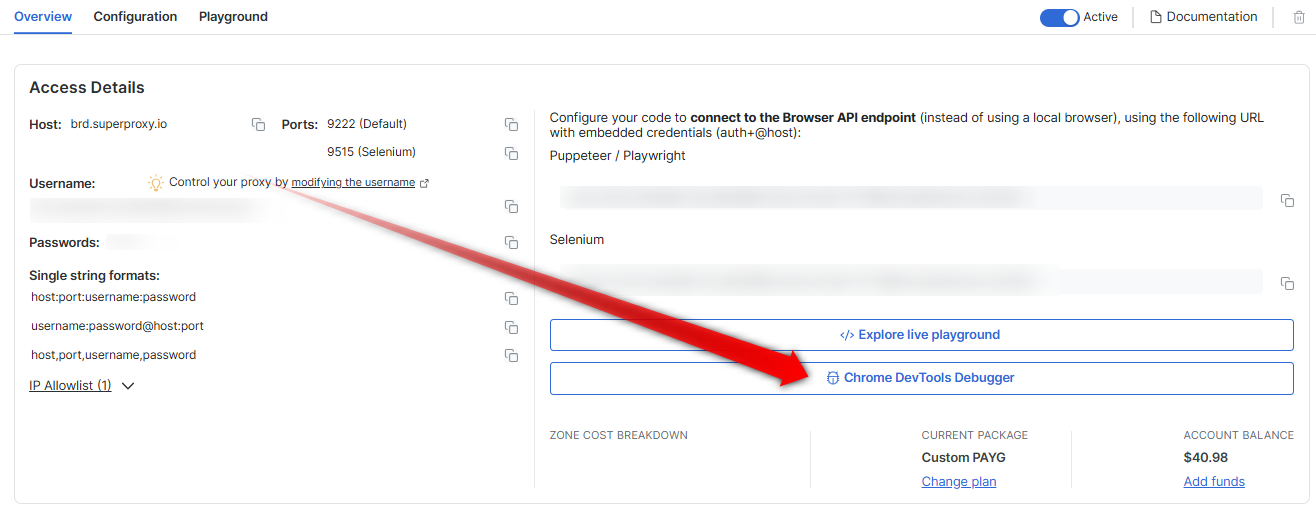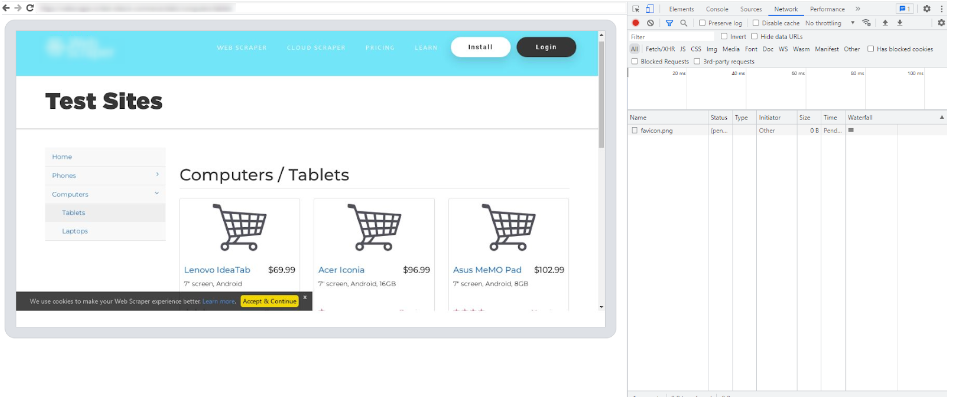Browser API Debugger
Web scraping projects often require intricate interactions with target websites and debugging is vital for identifying and resolving issues found during the development process. The Browser API Debugger serves as a valuable resource, enabling you to inspect, analyze, and fine-tune your code alongside Chrome Dev Tools, resulting in better control, visibility, and efficiency.Where to find it
Our Browser API Debugger can be launched via two methods:- Manually via Control Panel
- Remotely via your script
- Manually via Control Panel
- Remotely via your script
The Browser API Debugger can be easily accessed within your Bright Data Control Panel. Follow these steps:
- Within the control panel, go to My Zones
- Click on your specific Browser API zone
- Click on the Overview tab
-
On the right side, Click on the “Chrome Dev Tools Debugger” button seen below:

Getting Started with the Debugger & Chrome Dev Tools
1
Open a Browser API Session
- Ensure you have an active Browser API session
- If you don’t yet know how to launch a Browser API session, see our Quick Start guide.
2
Launch the Debugger
- Once your session is up and running you can now launch the Debugger.
- Click on the Debugger button within your ‘Access parameters’ tab to launch the Browser API Debugger interface (see the screenshot above )
3
Connect with your live browser sessions
- Within the Debugger interface, you will find a list of your live Browser API sessions.
- Select the preferred session that you wish to debug
- Click on the session link or copy/paste it into your browser of choice, and this will establish a connection between the Debugger and your selected session.

Leveraging Chrome Dev Tools
- With the Browser API Debugger now connected to your live session, you gain access to the powerful features of Chrome Dev Tools.
- Utilize the Dev Tools interface to inspect HTML elements, analyze network requests, debug JavaScript code, and monitor performance. Leverage breakpoints, console logging, and other debugging techniques to identify and resolve issues within your code.

Automatically opening devtools locally to view your live browser session
If you would like to automatically launch devtools on every session to view your live browser session, you can integrate the following code snippet:NodeJS - Puppeteer
Debugger Walkthrough
Check out the Browser API Debugger in action belowError codes
Analyze some of the popular error codes you might be receiving below:| Error Code | Meaning | What can you do about it? |
|---|---|---|
407 | An issue with the remote browser’s port | Please check your remote browser’s port. The correct port for Browser API is either the default port:9222 OR if you are using Selenium specifically, use port:9515 |
403 | Authentication Error | Check authentication credentials (username, password) and check that you are using the correct “Browser API” zone from Bright Data control panel |
503 | Service Unavailable | We are likely scaling browsers right now to meet demand. Try to reconnect in 1 minute. |